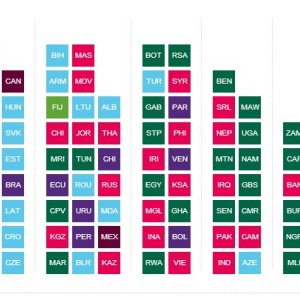
The Good Enough to Eat Index highlights some of the areas of critical concern for many countries when it comes to making sure that people can eat well, and indicates some important failings of the global food system that must be addressed. The index is an interactive snapshot of 125 countries showing the best and worst places in the world to eat, and the challenges people face getting enough of the right food. It was constructed to illustrate how overconsumption, misuse of resources and waste are common elements of a system where one in eight people suffer from hunger, while there is enough food to feed the global population.
It looks at four core concerns for consumers around the world, using two measures to help assess the challenges:
- Do people have enough to eat? – Measured by levels of undernourishment and underweight children
- Can people afford to eat? – Measured by food price levels compared to other goods and services and food price volatility
- Is food of good quality? – Measured by diet diversification and access to clean and safe water
- What are the health outcomes of people’s diet? – Measured by diabetes and obesity.
Eight established global data sources were identified that capture aspects of the food market relevant for this index. All figures are the most recently available global data sources from internationally recognized organizations – the Food and Agriculture Organization, the World Health Organization and the International Labour Organization. To create a globally comparable index, the sources have global coverage, scoring between 134 and 200 countries and territories.
The index shows that the Netherlands is No. 1 in the world for having the most plentiful, nutritious, healthy and affordable diet, beating France and Switzerland into second place. Chad is last in 125th spot behind Ethiopia and Angola. Note that the environmental sustainability of these diets is not considered.
Read more about the index on Oxfam's website here. The data is available in full can be accessed here. You can read the press-release about the index here.
Read more about nutrition and diets from a global perspective on our website here and browse through our resources focusing on various statistics on consumption here.







Post a new comment »